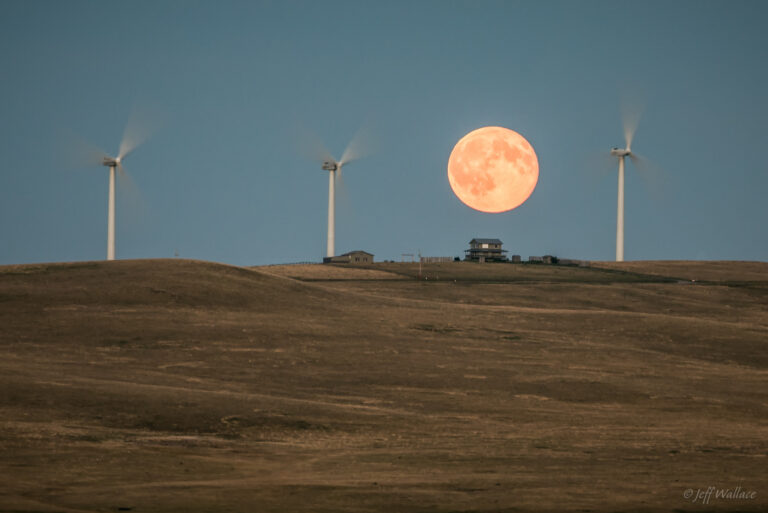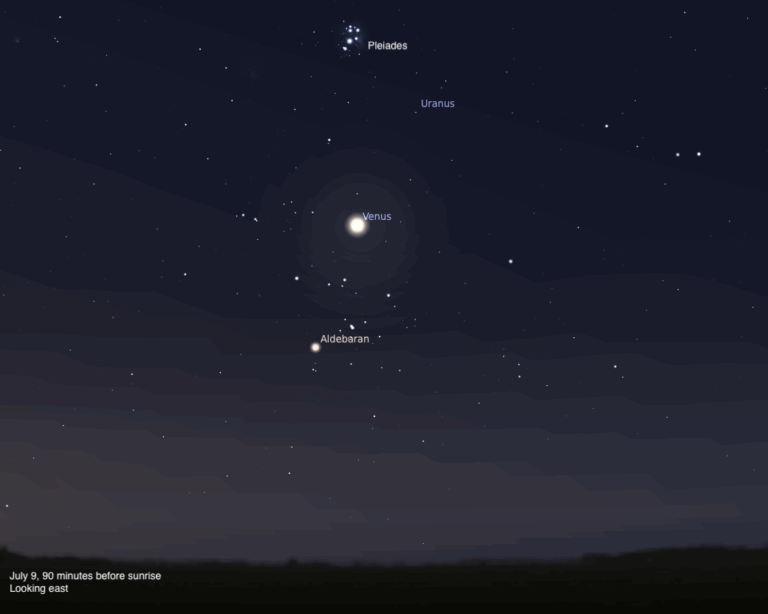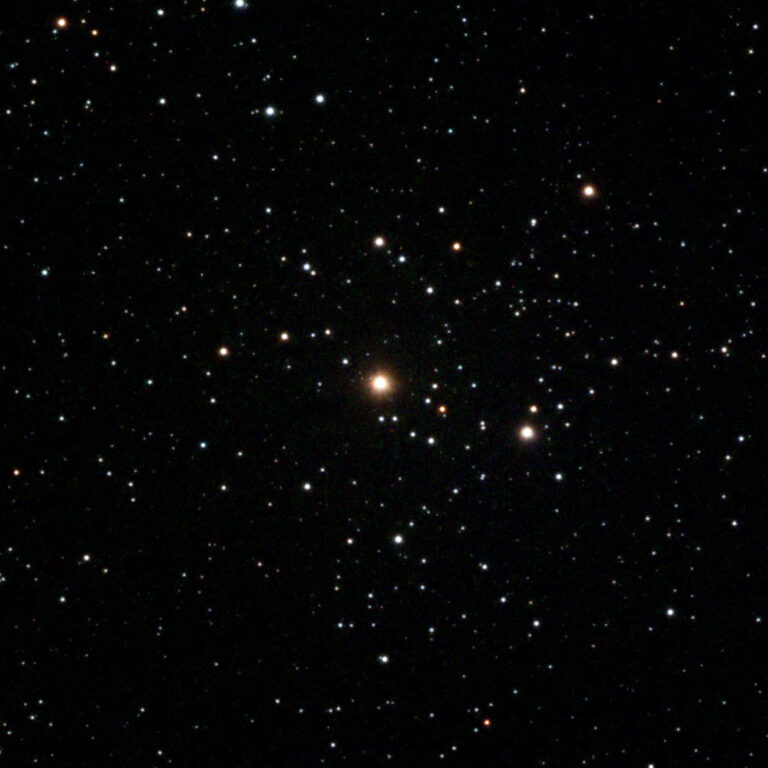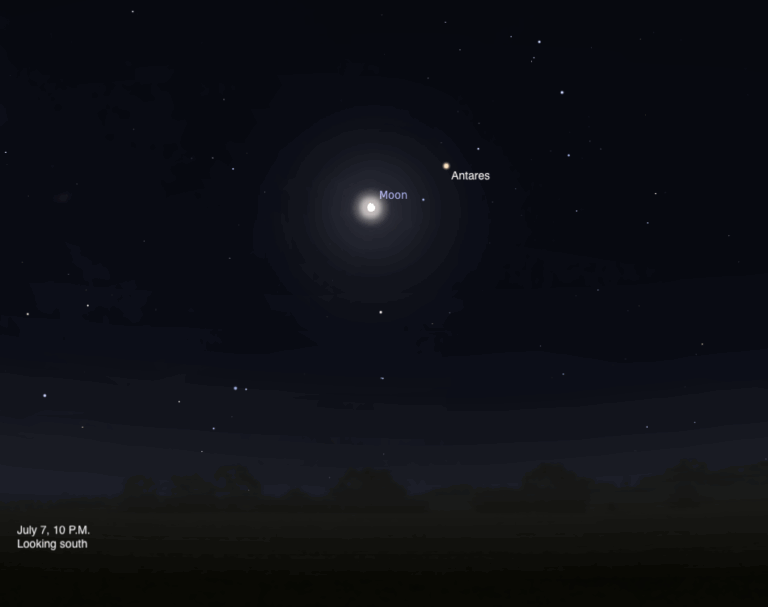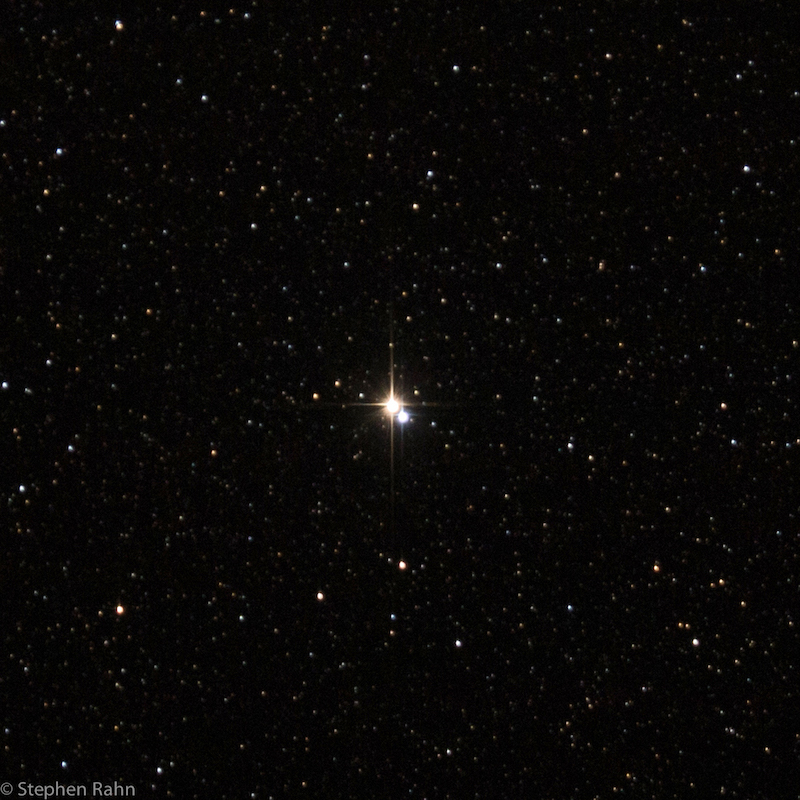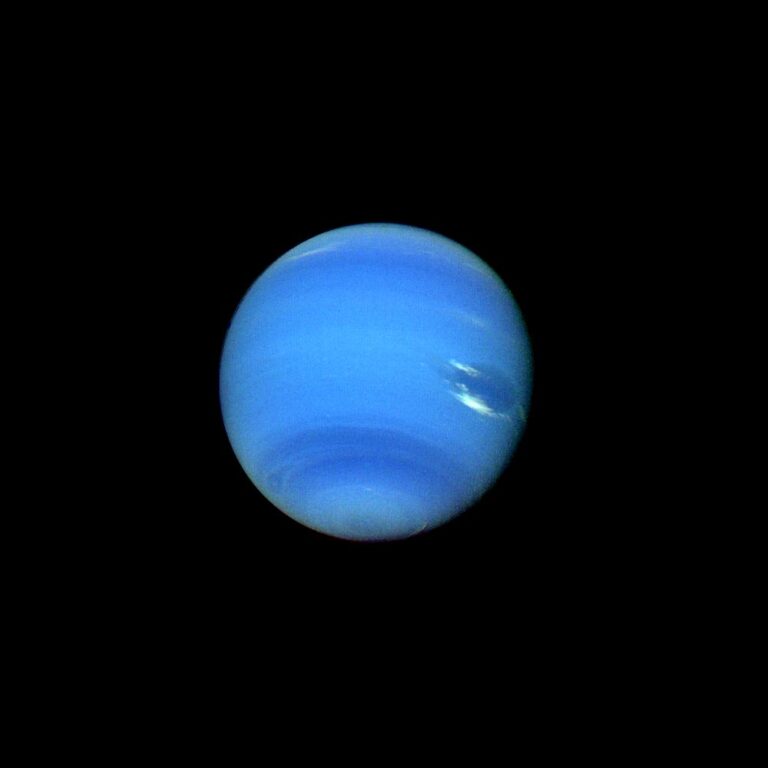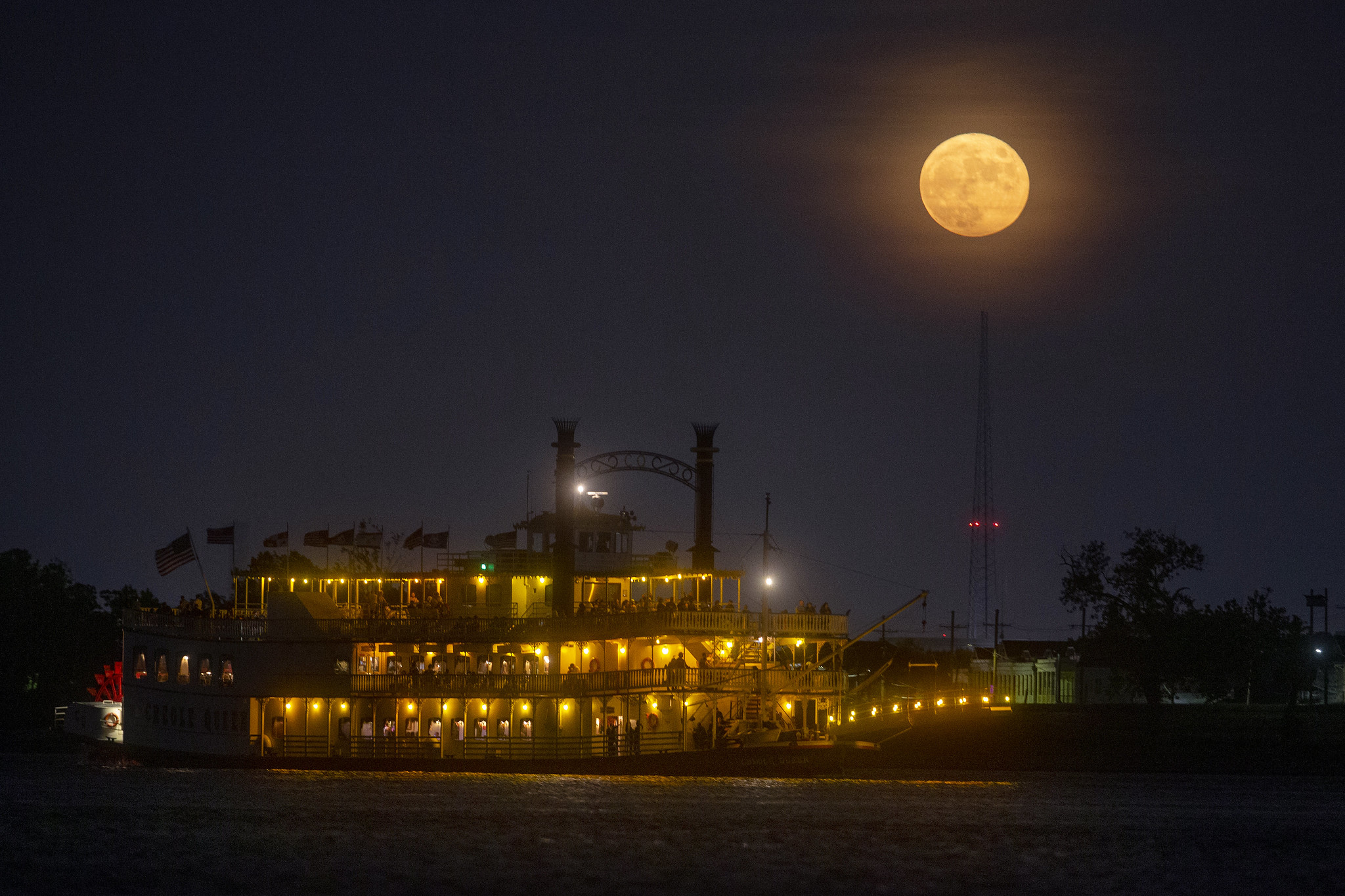
Key Takeaways:
Friday, July 28
The solar system has plenty to share with us this evening. Mercury passes 0.1° south of Regulus at 9 P.M. EDT. Regardless of your time zone, you can observe the pair starting shortly after local sunset, looking west as twilight falls. Three planets are visible: Lowest is Venus, which is also brightest at magnitude –4.5. About 5.7° directly above it is Mercury, which appears at magnitude –0.1. And finally, about 11.2° to Mercury’s upper left is Mars; the Red Planet is the faintest of the three, glowing at magnitude 1.8. You’ll spot the first two planets easily, but the sky will need to darken a bit before Mars will appear.
Around the time you can see Mars, Regulus should also become visible. This magnitude 1.4 star marks the heart of Leo the Lion and is relatively close at 79 light-years away. It’s a B-type star, meaning it is much hotter and more massive than our Sun and shines some 360 times as bright. Because Mercury is so close, you should be able to catch both in the same binocular or telescopic field of view. Can you tell that Mercury isn’t fully lit, appearing as a 66-percent-illuminated crescent?
The scene will sink out of sight relatively quickly after sunset. Once it does, turn south to catch the bright, three-quarters-Full Moon hanging near another famous star marking a constellation’s heart: this time, Antares in Scorpius. The bright red giant sits within about 5° of our satellite this evening, depending on when you look (i.e., your time zone). Magnitude 1.1 Antares is often considered a “rival” of the planet Mars because it can appear similar in brightness and hue. Compare it with Mars in the west before the planet sets. What do you think?
Sunrise: 5:55 A.M.
Sunset: 8:18 P.M.
Moonrise: 4:52 P.M.
Moonset: 1:13 A.M.
Moon Phase: Waxing gibbous (78%)
*Times for sunrise, sunset, moonrise, and moonset are given in local time from 40° N 90° W. The Moon’s illumination is given at 12 P.M. local time from the same location.
Saturday, July 29
With a bright Moon in the sky most of the night, we’ll need to focus on easy-to-spot targets for a while. One is the prominent double star Albireo, which marks the head of Cygnus the Swan. It sits on the other side of the constellation from the Swan’s bright and well-known tail star, Deneb.
High in the east after dark, Albireo lies in southwestern Cygnus and appears to the naked eye as a magnitude 3 star. But through even a low-power telescope, this single point of light splits into a brilliantly colored pair of suns about half an arcminute apart, with magnitudes of 3.3 and 5.5.
The brighter primary is orange-yellow; this is a K star slightly cooler than the Sun but about five times its mass. Its fainter companion is a much hotter B star, appearing dramatically different in color with its blue-white hue. This star contains some 3 times the Sun’s mass. Research has shown it is also spinning quite rapidly, flinging off material that has formed into a disk around it.
Although not visible through a telescope, the orangey primary has a much closer companion star that is also a B-type star roughly three times the Sun’s mass. This makes Albireo not a double but a triple star.
Sunrise: 5:56 A.M.
Sunset: 8:17 P.M.
Moonrise: 6:03 P.M.
Moonset: 1:58 A.M.
Moon Phase: Waxing gibbous (87%)
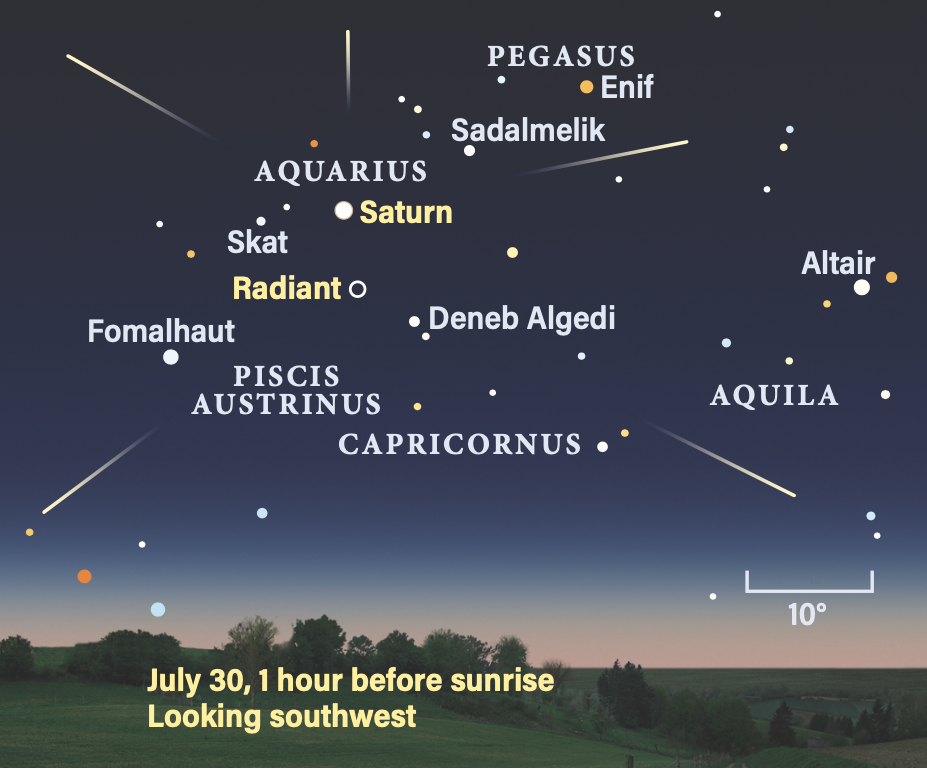
Sunday, July 30
The Southern Delta Aquariid meteor shower peaks today, although the brightening Moon will make spotting shower meteors a challenge. Fortunately, the Moon sets about three hours before sunrise, providing a short but effective window for trying to catch early-morning meteors.
An hour before sunrise, the radiant is some 25° above the southwestern horizon. The Southern Delta Aquariids’ radiant lies in Aquarius, about halfway between the star 3rd-magnitude Skat and the similarly bright star Deneb Algedi in eastern Capricornus. This year, however, there’s another landmark to help you find it: Magnitude 0.5 Saturn is about 7° above (northeast of) the radiant. So, you can find Saturn in the sky and drop down a little to locate the point from which shower meteors will appear to radiate.
However, once you’ve found this point, look a little south or west of it — this is where you’re likely to spot the best meteors with the longest trains, rather than at the radiant itself. The Southern Delta Aquariids are expected to produce roughly 25 meteors per hour around the peak, so while it’s not going to be a stunning show, you can expect to catch at least a few bright shooting stars.
Sunrise: 5:57 A.M.
Sunset: 8:16 P.M.
Moonrise: 7:08 P.M.
Moonset: 2:54 A.M.
Moon Phase: Waxing gibbous (94%)
Monday, July 31
As the Moon sets in the south and the short window for catching meteors opens this morning, consider spending some time enjoying Saturn through a telescope as well. Around 4 A.M. local daylight time, the planet is roughly 40° high in the south, outshining the dimmer stars that surround it in this region of the sky. Its brightest companion is 1st-magnitude Fomalhaut in Piscis Austrinus, which hangs below Saturn, closer to the horizon.
Through a telescope, Saturn’s rings are one of the standout features in our solar system. They now stretch about 43″ across, a little more than twice the span of the planet’s disk. Several of the planet’s moons are also arrayed around it today, the brightest of which is 8th-magnitude Titan to the southwest. This will be the easiest satellite to spot; next come 10th-magnitude Rhea, Tethys, and Dione. The first two lie just west of the rings, while Dione is slightly southeast of the planet’s disk, much closer than any of the other visible moons. Fainter moons also lie to Saturn’s west but these will be much harder to see, especially if the Moon’s bright background light — or morning twilight — are around.
Sunrise: 5:57 A.M.
Sunset: 8:15 P.M.
Moonrise: 8:03 P.M.
Moonset: 4:04 A.M.
Moon Phase: Waxing gibbous (98%)
Tuesday, August 1
Full Moon occurs at 2:32 P.M. EDT this afternoon. The August Full Moon is typically called a Sturgeon Moon, and this one is special for two reasons. First, it occurs when the Moon is near perigee, the closest point to Earth in its orbit. That makes this Full Moon a Super Moon, which appears slightly larger and brighter in the sky than the average Full Moon, since it sits closer to Earth at the time it is Full. But there’s a second reason this Full Moon is special — it’s the first of two Full Moons during August. The second, called a Blue Moon, will occur on the 30th. And it, too, will be a Super Moon, this time appearing bigger and brighter than any other Super Moon this year.
The Full Moon — and particularly a bright Super Moon — makes other nighttime observing difficult. So instead, get out and enjoy Luna’s light. Does our satellite appear larger to you than usual? It’s difficult for most people to tell, as a Super Moon only appears a few percent larger than an average Full Moon. (This particular Super Moon spans about 33½ arcminutes, while an average Full Moon spans 30 to 31 arcminutes.) However, its light may be noticeably brighter, casting sharper shadows if you’re in a location with little to no ground light to interfere.
Although there are no shadows on the surface of the Moon when it is Full — it’s high noon above the nearside! — you can still see the differences in light and dark terrain. The large, dark regions are maria, or seas, that were once filled with lava. They are younger than the lighter, cratered landscape that surrounds them.
Sunrise: 5:58 A.M.
Sunset: 8:14 P.M.
Moonrise: 8:47 P.M.
Moonset: 5:23 A.M.
Moon Phase: Full
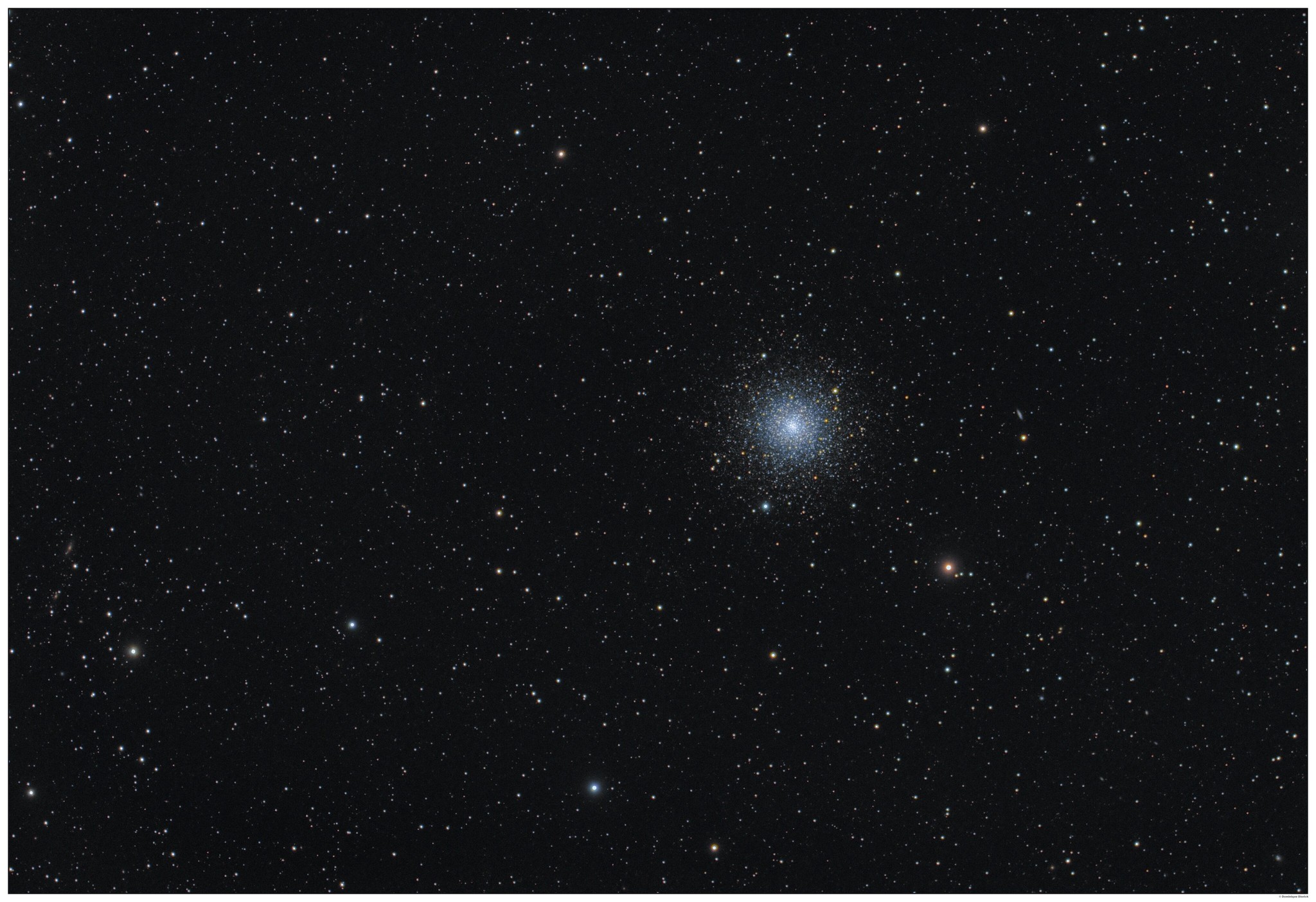
Wednesday, August 2
Less than 12 hours after reaching Full, the Moon reaches perigee, the closest point to Earth in its orbit, at 1:52 A.M. EDT — this is what earns this Full Moon the moniker Super Moon. Our satellite is now 222,022 miles (357,310 kilometers) away.
Because it is Full, the Moon will continue to dominate the sky, setting around sunrise and rising again shortly after sunset this evening. Luna sits in Aquarius near Saturn — it will pass close to the ringed planet early tomorrow morning. To avoid the bright background glare, let’s look west this evening, where Boötes the Herdsman is slowly following the Hunting Dogs, Canes Venatici, toward the horizon.
Boötes’ brightest star is magnitude –0.1 Arcturus, which lies at the end of an “arc” formed by the Big Dipper’s handle to its north. To Boötes’ west is Canes Venatici, anchored by a magnitude 5.6 alpha star. Canes Venatici contains several nice deep-sky objects, but we’ll have to stick to the brightest tonight: globular cluster M3, near the constellation’s border with Boötes.
Considered one of the best globulars to observe, this 6th-magnitude object lies about 12° northwest of Arcturus. Spanning about 18′, M3 contains some half a million stars all packed into a dense, bright ball. Many of its members are variable, in part owing to its age — as some types of stars age, they go through a phase that makes them unstable and begin to pulsate, turning them into variables. All globular clusters are old objects, many roughly the same age as the Milky Way itself.
Sunrise: 5:59 A.M.
Sunset: 8:13 P.M.
Moonrise: 9:22 P.M.
Moonset: 6:45 A.M.
Moon Phase: Waning gibbous (98%)
Thursday, August 3
The Moon passes 2° south of Saturn at 6 A.M. EDT. Because our satellite is still so bright, it will make observing the planet more challenging. Through a telescope, you’ll still see the rings, but any moons will likely be impossible to pick out.
Instead, let’s observe Jupiter this morning, already 20° high in the east around 2 A.M. local daylight time and rising. The king of planets is a bright magnitude –2.4, dominating eastern Aries and standing to the upper right of the Pleiades (M45) nearby in Taurus.
Jupiter is flanked by its four Galilean moons early this morning. Ganymede sits alone to the west, while (from nearest to farthest) Io, Europa, and Callisto are arrayed to the east. Io is drawing closer to the gas giant for a transit, and its shadow appears on the cloud tops around 4:45 A.M. EDT. The moon follows just after 5 A.M. CDT, after sunrise on the East Coast and as the Sun is nearly up in the Midwest. The shadow is now about three-quarters of the way across the planet’s face; observers in western time zones can follow it as it slides away just before 5 A.M. MDT, followed by Io leaving the disk around 5:20 A.M. PDT.
Sunrise: 6:00 A.M.
Sunset: 8:12 P.M.
Moonrise: 9:52 P.M.
Moonset: 8:05 A.M.
Moon Phase: Waning gibbous (94%)
Friday, August 4
The Moon now passes 1.5° south of Neptune at 6 P.M. EDT; the pair rise within an hour and a half of sunset, both located in southern Pisces.
Neptune is a faint binocular or telescope object at magnitude 7.7. It lies about 11′ due north of an 8th-magnitude field star and some 4.7° southeast of Lambda (λ) Piscium in the Circlet of Pisces. Despite its large girth, the ice giant is so distant that it appears a mere 2″ across. It should look like a dim, “flat” blue-gray star in your field of view.
The Moon has lost some of its illumination and is now an 84-percent-lit waning gibbous late this evening. The shadow of the terminator, which divides lunar night from day, is starting to creep across its eastern half, hiding the Seas of Fertility and Crises while leaving Tranquillity and Serenity on view. From some locations, it will occult two relatively bright, 6th-magnitude field stars between about 11:50 P.M. EDT and 12:20 A.M. EDT tomorrow morning (still the 4th for all time zones west of Eastern).
Sunrise: 6:01 A.M.
Sunset: 8:10 P.M.
Moonrise: 10:18 P.M.
Moonset: 9:23 A.M.
Moon Phase: Waning gibbous (87%)

Sky This Week is brought to you in part by Celestron.



